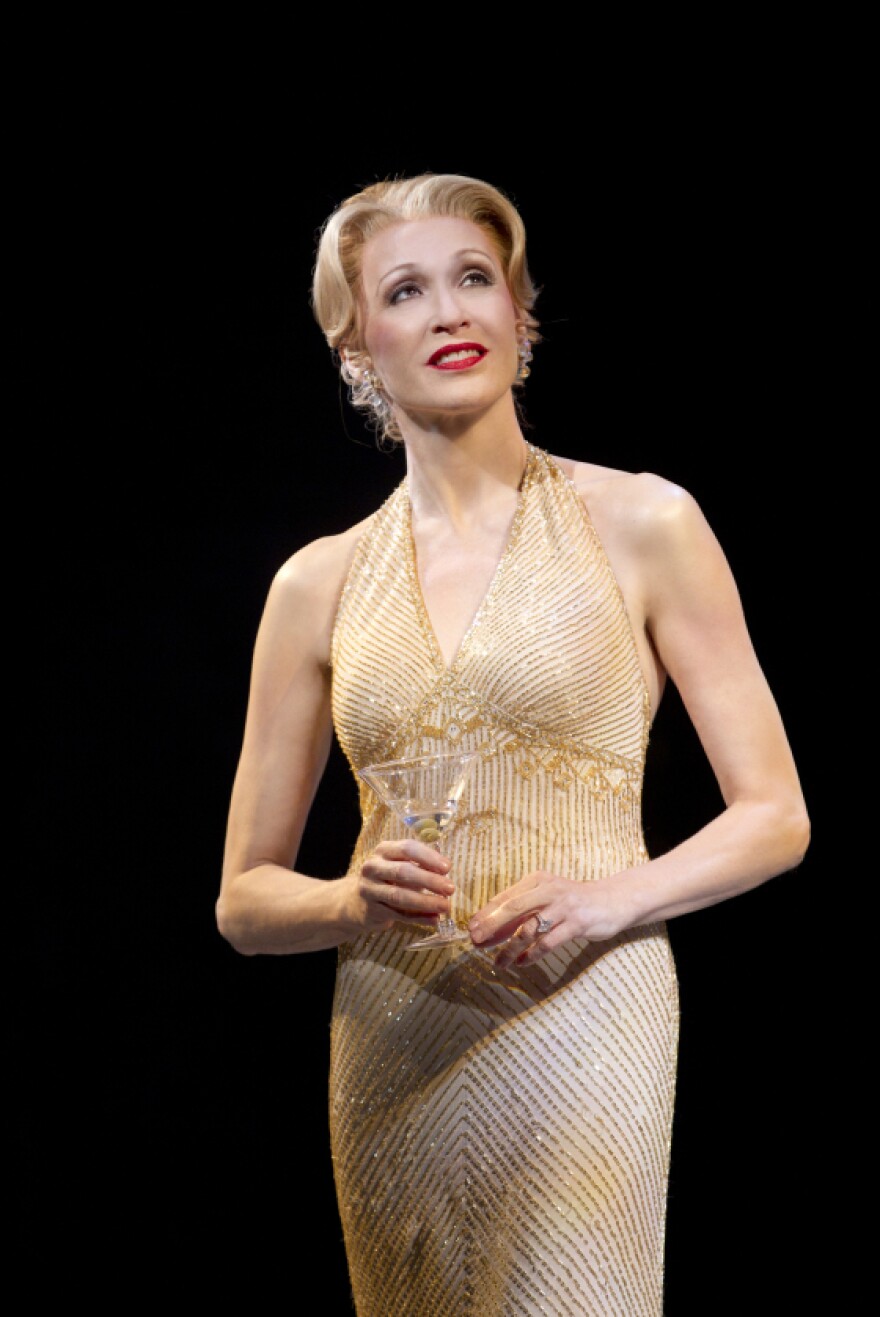Make no mistake: With a cast of more than 40, Follies is a really big show. The legendary musical takes place on the stage of a Broadway theater, at a reunion of former showgirls, with a domestic drama unfolding in the present while the stage is literally filled with ghosts from the past.
Much of Stephen Sondheim's score evokes popular music from the early part of the 20th century, when the Follies — the Cirque du Soleil of its day — was an extravagant Broadway entertainment. Jonathan Tunick, who orchestrated most of Sondheim's shows, says Follies is probably the biggest score he ever worked on. That's in part because, in essence, it's three scores.
"There's the dramatic score, in which the characters sing," Tunick explains, "and there's what Steve calls the 'pastiche' score, which are examples of the kind of period songs that these characters would've sung in the old days, in the Follies. And then there's the final 20 minutes of the show, in which it goes into this surrealistic fantasy."
In the lavish revival opening Monday night on Broadway, Jayne Houdyshell plays former Follies headliner Hattie Walker, which means she gets to sing one of the best-known songs from the score: "Broadway Baby." With the revival's full-size 28-piece orchestra — a rarity in these cost-conscious times — it's a bona fide showstopper.
"I mean, I think it's the greatest show biz number, ever," Houdyshell says. "And to have that full-bodied sound underneath you, it's a real thrill."
"Broadway Baby" is one of the pastiche songs Tunick talks about, and the orchestrator amused himself using dance-band cliches of the 1920s and '30s — little violin and trombone licks, hat-tips to jazz greats like Jack Teagarden and Miff Mole — to make the song sound like it actually came from that time.

But Tunick's job wasn't just to take Sondheim's piano score and translate it for orchestra. He went to rehearsals, to get a sense of how the songs worked in context.
"One of the things that the orchestrator can do with a show to help with the score is to provide subtext," he says. "We can express what the character is not saying; in fact, even what a character may not be aware of."
'Nothing But One Big Lie'
As director Eric Schaeffer points out, there's one song in Follies that's pretty much all subtext.
One of the four middle-aged, discontented main characters — Sally, played in this revival by Bernadette Peters — is a degree or two more self-deluded than the others. She's still carrying a torch for her ex-lover, Ben (Ron Raines), even though she's been married to Buddy (Danny Burstein) for almost 30 years.
Sally sings a song called "In Buddy's Eyes" — to Ben — in which she explains how happy she is because her husband adores her.
"It's a lie," Schaeffer says. "Ben says 'How are you?', and she says everything's fine, you know, 'cause of Buddy.'
"And everything's not fine — because of Buddy. So, this whole song is nothing but one big lie."
To help drive home the point that Sally doth protest a bit much, Tunick's orchestration goes back and forth between a warm sound — soaring strings, to emphasize Sally's delusions — and a cold sound, low woodwinds, to emphasize the reality she's trying to escape.
'Where Everybody Loves To Live'
The last part of the show — the "third score," so to speak, of the three Sondheim and Tunick wrote — is a lavishly produced 20-minute sequence called "Loveland," where the four central characters expose their own personal follies in what Tunick describes as a "surrealistic fantasy."
Danny Burstein plays Sally's husband, Buddy, a tragic figure caught between a loveless marriage and a hopeless affair.
"That's what you get for three-quarters of the show from my character," Burstein says. "And then, all of a sudden, out of nowhere, the Loveland section comes along, and he's able to deliver this wonderful vaudeville comic turn."
In "Buddy's Blues" — essentially a highly entertaining nervous breakdown — the orchestration pulls out all the stops, employing all manner of high-energy tricks: rude percussion effects, sliding trombones.
Looking back, 40 years after the original production, the man who wrote it remembers this score as a special one.
"I can think of no score where I was more analytical than this one," Tunick says. And yet in Follies, more so than in any other score, "the magic just took over."
Copyright 2021 NPR. To see more, visit https://www.npr.org.




